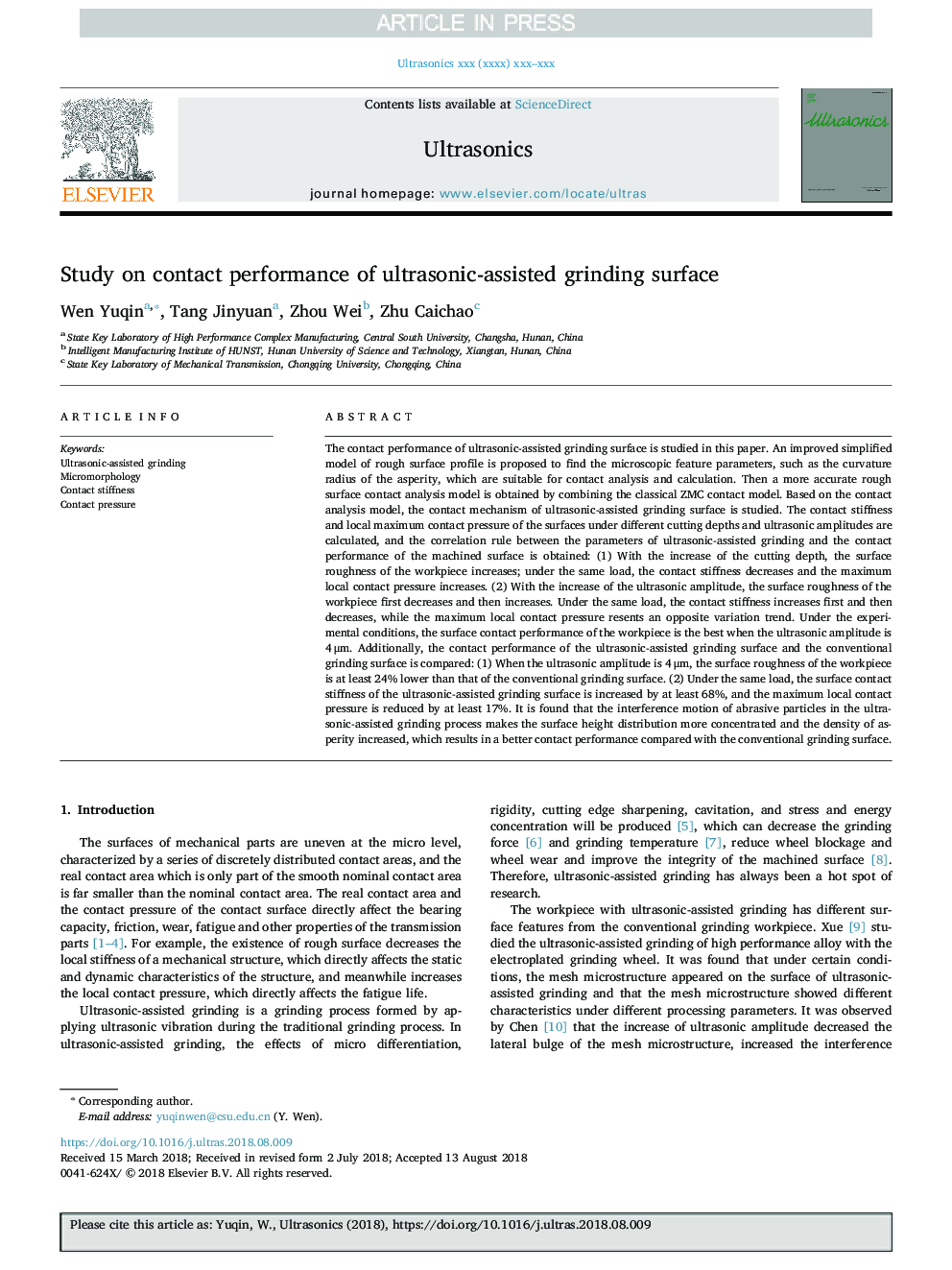| کد مقاله | کد نشریه | سال انتشار | مقاله انگلیسی | نسخه تمام متن |
|---|---|---|---|---|
| 9953731 | 1523178 | 2019 | 8 صفحه PDF | دانلود رایگان |
عنوان انگلیسی مقاله ISI
Study on contact performance of ultrasonic-assisted grinding surface
ترجمه فارسی عنوان
بررسی عملکرد تماس با سطح آسیاب با کمک اولتراسونیک
دانلود مقاله + سفارش ترجمه
دانلود مقاله ISI انگلیسی
رایگان برای ایرانیان
کلمات کلیدی
سنگ زنی کمک سونوگرافی، میکرومورفولوژی، سختی تماس فشار تماس
موضوعات مرتبط
مهندسی و علوم پایه
فیزیک و نجوم
آکوستیک و فرا صوت
چکیده انگلیسی
The contact performance of ultrasonic-assisted grinding surface is studied in this paper. An improved simplified model of rough surface profile is proposed to find the microscopic feature parameters, such as the curvature radius of the asperity, which are suitable for contact analysis and calculation. Then a more accurate rough surface contact analysis model is obtained by combining the classical ZMC contact model. Based on the contact analysis model, the contact mechanism of ultrasonic-assisted grinding surface is studied. The contact stiffness and local maximum contact pressure of the surfaces under different cutting depths and ultrasonic amplitudes are calculated, and the correlation rule between the parameters of ultrasonic-assisted grinding and the contact performance of the machined surface is obtained: (1) With the increase of the cutting depth, the surface roughness of the workpiece increases; under the same load, the contact stiffness decreases and the maximum local contact pressure increases. (2) With the increase of the ultrasonic amplitude, the surface roughness of the workpiece first decreases and then increases. Under the same load, the contact stiffness increases first and then decreases, while the maximum local contact pressure resents an opposite variation trend. Under the experimental conditions, the surface contact performance of the workpiece is the best when the ultrasonic amplitude is 4â¯Î¼m. Additionally, the contact performance of the ultrasonic-assisted grinding surface and the conventional grinding surface is compared: (1) When the ultrasonic amplitude is 4â¯Î¼m, the surface roughness of the workpiece is at least 24% lower than that of the conventional grinding surface. (2) Under the same load, the surface contact stiffness of the ultrasonic-assisted grinding surface is increased by at least 68%, and the maximum local contact pressure is reduced by at least 17%. It is found that the interference motion of abrasive particles in the ultrasonic-assisted grinding process makes the surface height distribution more concentrated and the density of asperity increased, which results in a better contact performance compared with the conventional grinding surface.
ناشر
Database: Elsevier - ScienceDirect (ساینس دایرکت)
Journal: Ultrasonics - Volume 91, January 2019, Pages 193-200
Journal: Ultrasonics - Volume 91, January 2019, Pages 193-200
نویسندگان
Wen Yuqin, Tang Jinyuan, Zhou Wei, Zhu Caichao,
